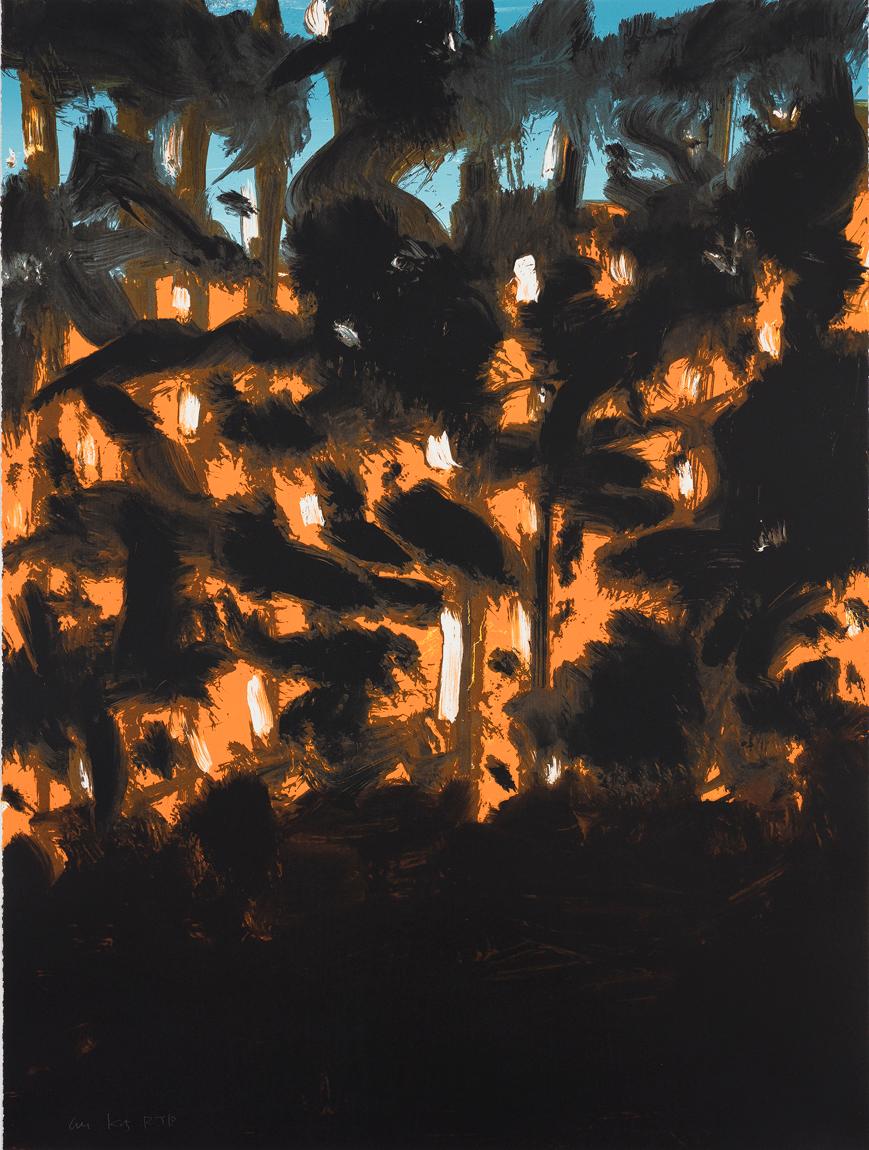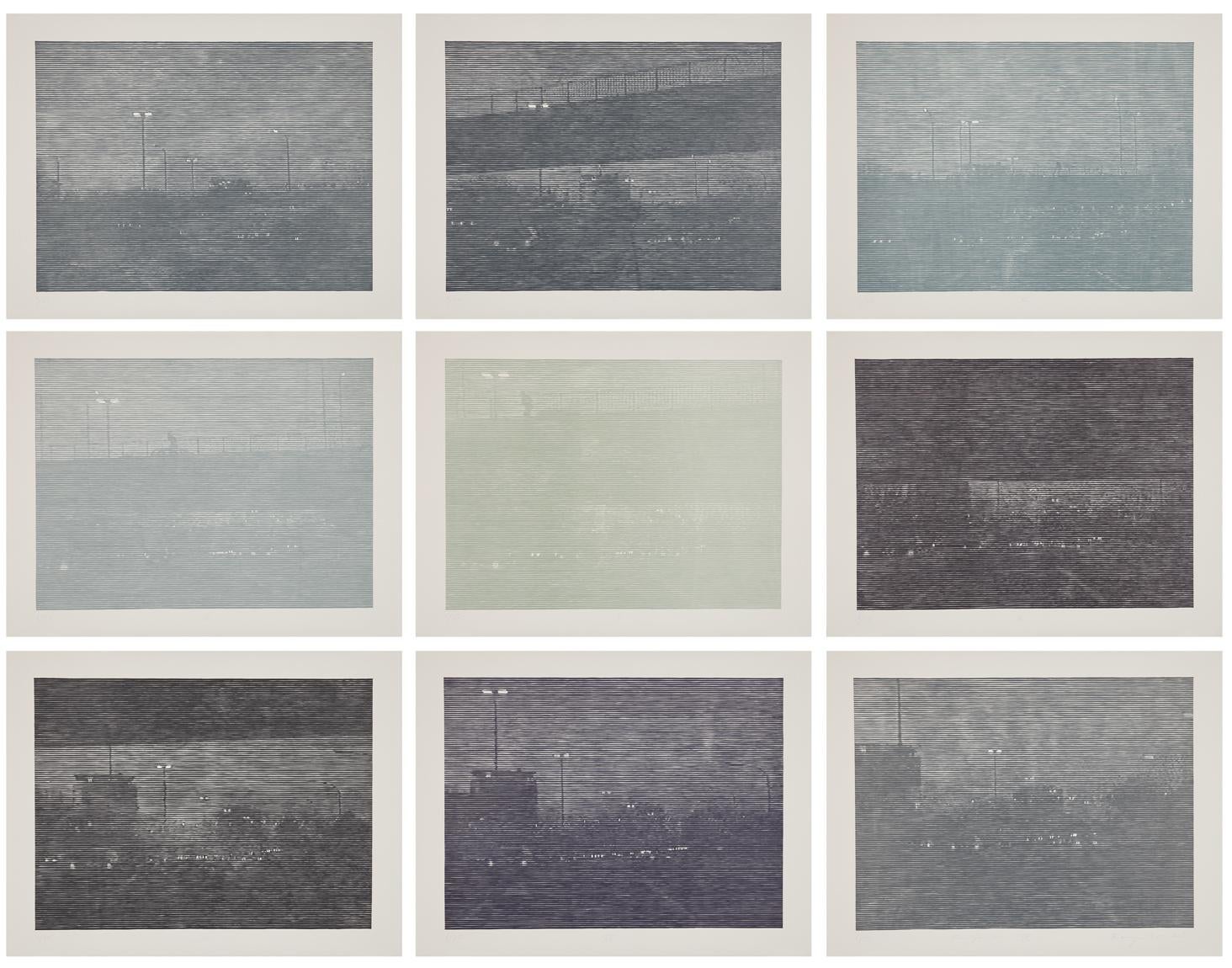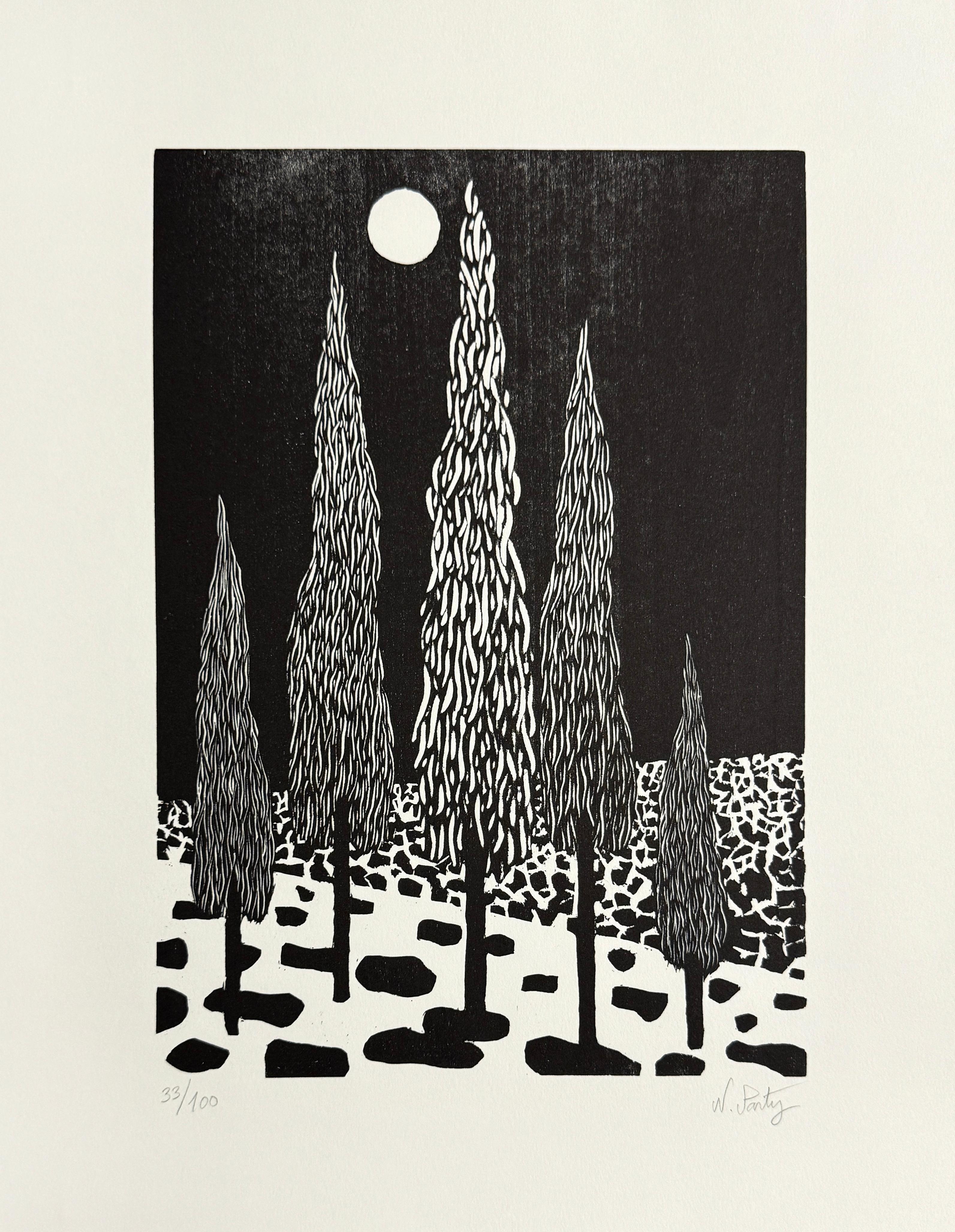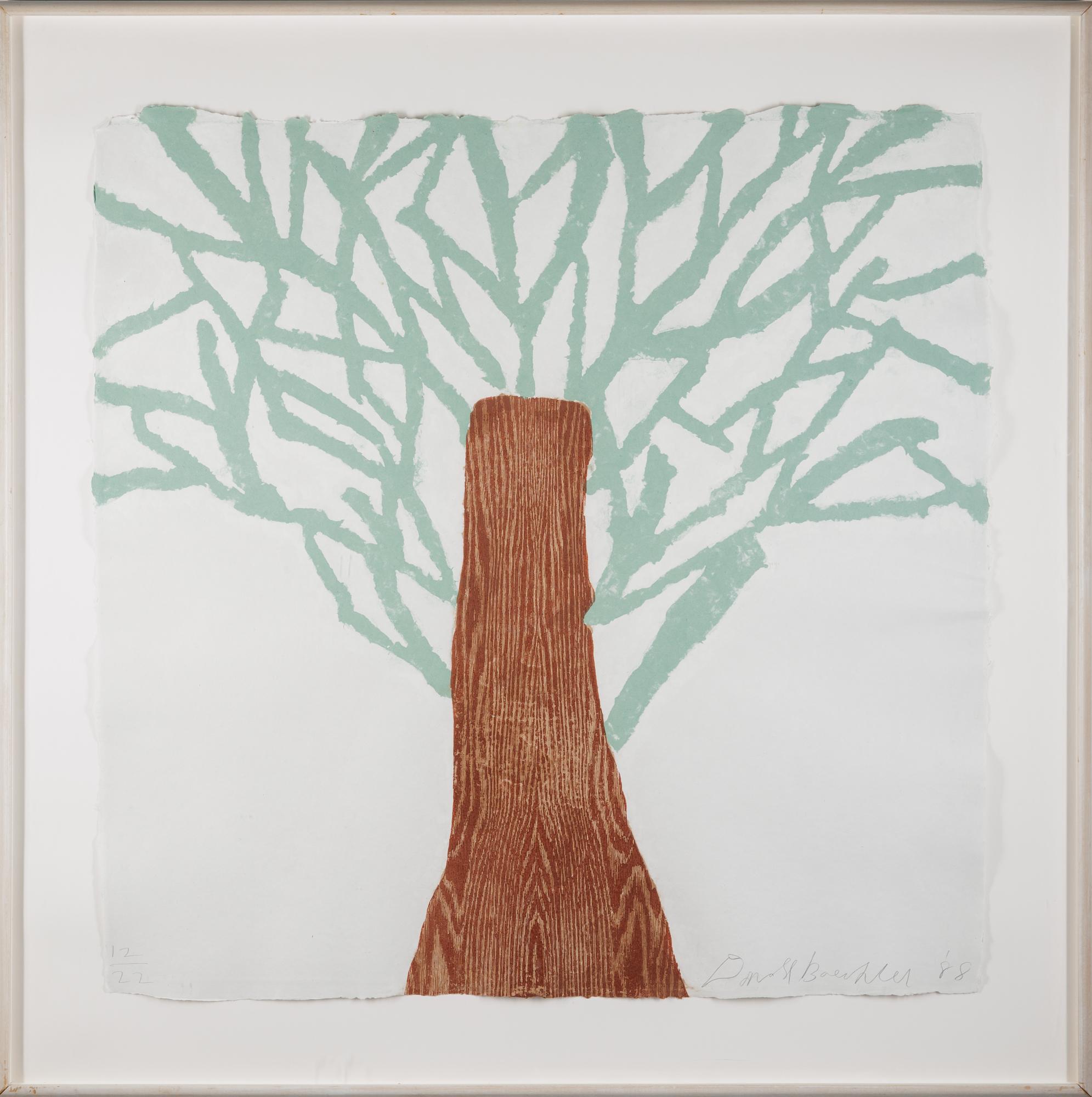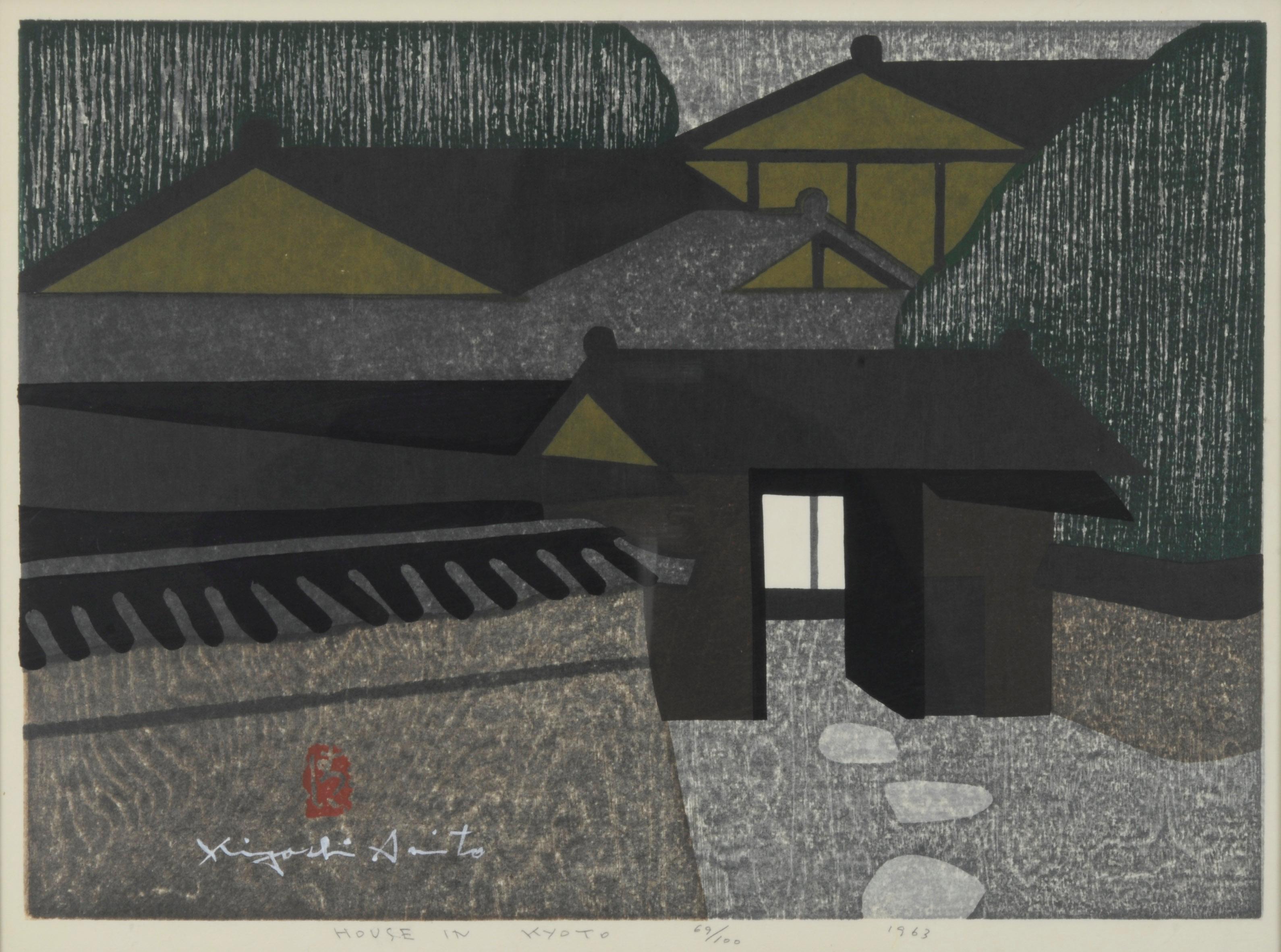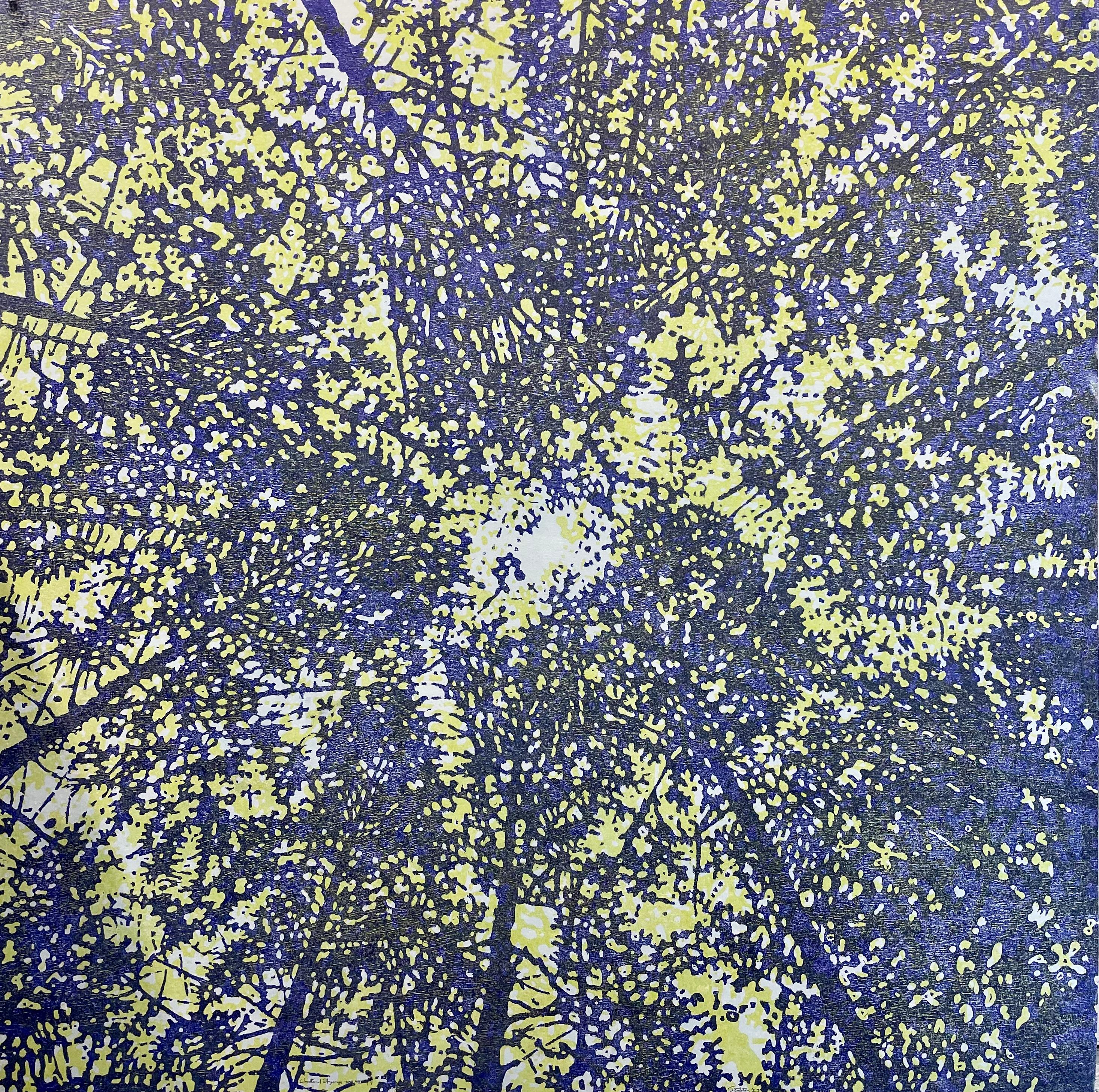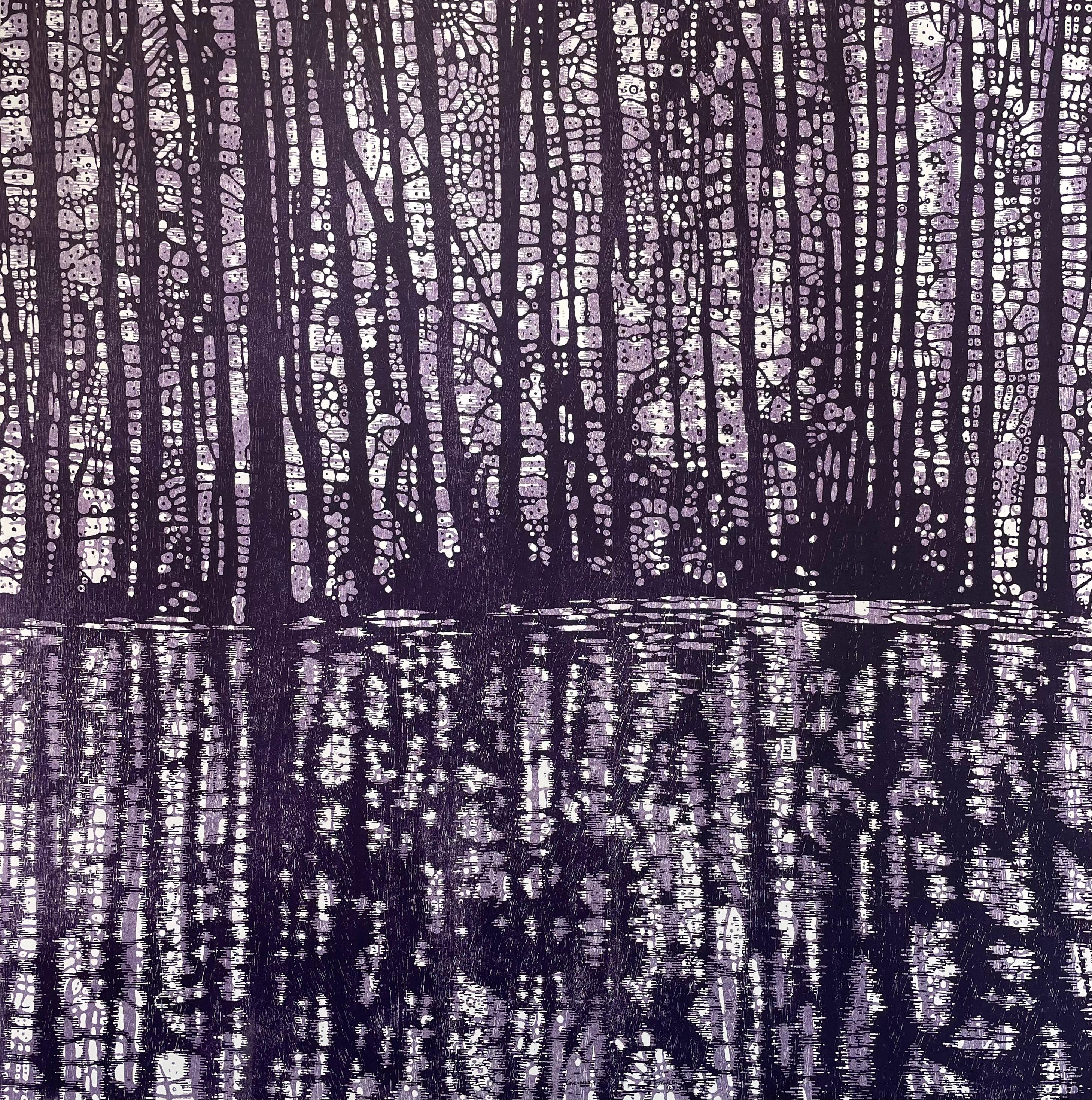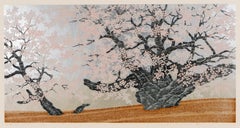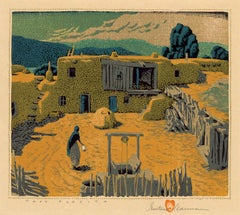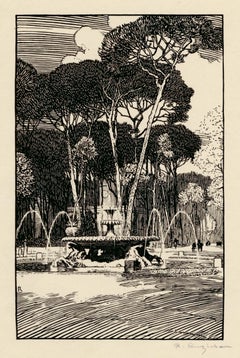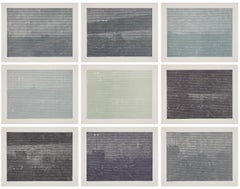
We Swam into the Dancing Light
View Similar Items
Want more images or videos?
Request additional images or videos from the seller
1 of 3
Merlyn ChestermanWe Swam into the Dancing Lightc. 2010
c. 2010
About the Item
- Creator:Merlyn Chesterman (1949)
- Creation Year:c. 2010
- Dimensions:Height: 7.88 in (20.02 cm)Width: 11.88 in (30.18 cm)
- Medium:
- Movement & Style:
- Period:
- Condition:
- Gallery Location:Myrtle Beach, SC
- Reference Number:Seller: ??1stDibs: LU53234226901
About the Seller
5.0
Recognized Seller
These prestigious sellers are industry leaders and represent the highest echelon for item quality and design.
Platinum Seller
These expertly vetted sellers are 1stDibs' most experienced sellers and are rated highest by our customers.
Established in 1995
1stDibs seller since 2016
255 sales on 1stDibs
Typical response time: 1 hour
Associations
International Fine Print Dealers Association
More From This SellerView All
- 'Garyu no sakura' (The Lying Dragon Cherry Tree, Gifu) — Contemporary JapaneseLocated in Myrtle Beach, SCHajime Namiki, 'Garyu no sakura (The Lying Dragon Cherry Tree, Gifu)', color woodcut, 2003, edition 200. Signed in pencil and with the artist’s red seal....Category
Early 2000s Contemporary Landscape Prints
MaterialsWoodcut
- 'Taos Placita' — 1940s Southwest RegionalismBy Gustave BaumannLocated in Myrtle Beach, SCGustave Baumann, 'Taos Placita', color woodcut, 1947, edition 125. Baumann 132. Signed, titled, and numbered '20-125' in pencil; with the artist’s Hand-in-Heart chop. A superb, richly-inked impression, with fresh colors, on fibrous oatmeal wove paper; the full sheet with margins (2 to 3 1/8 inches); slight rippling at the left sheet edge, in excellent condition. Matted to museum standards, unframed. Image size 9 5/8 x 11 1/4 inches (244 x 286 mm); sheet size 13 1/4 x 17 inches (337 x 432 mm). Collections: New Mexico Museum of Art, Phoenix Art Museum, Wichita Art Museum. ABOUT THE ARTIST Gustave Baumann (1881-1971) was a renowned printmaker and a leading figure of the American color woodcut revival whose exquisite craftsmanship and vibrant imagery captured the essence of the Southwest. "A brilliant printmaker, Baumann brought to the medium a full mastery of the craft of woodworking that he acquired from his father, a German cabinetmaker. This craftsmanship was coupled with a strong artistic training that resulted in the handsome objects we see in the exhibition today. After discovering New Mexico in 1918, Baumann began to explore in his woodblock prints of this period the light. color, and architectural forms of that landscape. His prints of this period are among the most beautiful and poetic images of the American West." —Lewis I. Sharp, Director, Denver Art Museum Baumann, the son of a craftsman, immigrated to the United States from Germany with his family when he was ten, settling in Chicago. From 1897 to 1904, he studied in the evenings at the Art Institute of Chicago, working in a commercial printmaking shop during the day. In 1905, he returned to Germany to attend the Kunstwerbe Schule in Munich, where he decided on a career in printmaking. He returned to Chicago in 1906 and worked for a few years as a graphic designer of labels. Baumann made his first prints in 1909 and exhibited them at the Art Institute of Chicago the following year. In 1910, he moved to the artists’ colony in Nashville, Indiana, where he explored the creative and commercial possibilities of a career as a printmaker. In 1915, he exhibited his color woodcuts at the Panama-Pacific International Exposition in San Francisco, winning the gold medal. Among Baumann’s ongoing commercial activities was his work for the Packard Motor Car Company from 1914 to 1920 where he produced designs, illustrations, and color woodcuts until 1923. In 1919, Baumann’s printmaking work dominated the important exhibition of American color woodcuts at the Detroit Institute of Arts. Twenty-six of his prints were included, far more than the works of any other artist. A set of his blocks, a preparatory drawing, and seven progressive proofs complemented the exhibition. That same year, Baumann worked in New York and, over the summer, in Provincetown, Massachusetts. His airy images of Cape Cod employed soft, pastel colors and occasionally showed the influence of the white-line woodcut technique. Many of his Chicago artist friends had traveled to the southwest, and Baumann became intrigued by their paintings, souvenirs, and stories of an exotic place named Taos, New Mexico. In the summer of 1918, he spent the summer in Taos sketching and painting before visiting Santa Fe. Paul Walter, the director of the Museum of New Mexico, offered him a studio in the museum's basement. Inspired by the rugged beauty of the Southwest—the vibrant colors and dramatic landscapes of the region became a central theme in his work, influencing his artistic style and subject matter for the remainder of his career. Later in the decade, he traveled to the West Coast and made prints of California landscape. Baumann's prints became synonymous with the Southwest, capturing the spirit of its place in America's identity with a unique sense of authenticity and reverence. His iconic images of desert vistas, pueblo villages, and indigenous cultures served as visual tributes to the region's rich cultural heritage, earning him a dedicated following among collectors and curators alike. A true craftsman and artist, Baumann completed every step of the printmaking process himself, cutting each block, mixing the inks, and printing every impression on the handmade paper he selected. His dedication to true craftsmanship and his commitment to preserving the integrity of his artistic vision earned him widespread acclaim and recognition within the art world. About the vibrant colors he produced, Baumann stated, “A knowledge of color needs to be acquired since they don’t all behave the same way when ground or mixed...careful chemistry goes into the making of colors, with meticulous testing for permanence. While complicated formulae evolve new colors, those derived from Earth and metal bases are still the most reliable.” In the 1930s, Baumann became interested in puppet theater. He designed and carved his own marionettes and established a little traveling company. From 1943 to 1945, the artist carved an altarpiece for the Episcopal Church of the Holy Faith in Santa Fe. In 1952, a retrospective exhibition of his prints was mounted at the New Mexico Museum of Fine Arts. Throughout his prolific career, Baumann executed nearly four hundred color woodcuts. Baumann’s woodcuts...Category
1940s American Modern Landscape Prints
MaterialsWoodcut
- Fountain of Sea Horses, Rome — Early 20th CenturyBy Rudolph RuzickaLocated in Myrtle Beach, SCRudolph Ruzicka, 'Fountain of Sea Horses, Rome', wood engraving, c. 1915. Signed, dated, and titled in pencil. Initialed in the block, lower left. A fine, richly-inked impression, on...Category
1910s American Modern Landscape Prints
MaterialsWoodcut
- 'Laguna Cove' — 1930s American ModernismBy Paul LandacreLocated in Myrtle Beach, SCPaul Landacre, 'Laguna Cove', wood engraving, 1935; edition 60 (16 printed), 2nd edition 150 (6 printed), Woodcut Society 200, Wien 247. Signed and titled in pencil. A brilliant, black impression, on cream wove Japan, with full margins (3/4 to 1 3/4 inches), in excellent condition. Archivally matted to museum standards, unframed. This impression is from the edition published for the Twentieth Presentation Print of the Woodcut Society, 1941. Printed by Torch Press, Cedar Rapids. Literature: Reproduced in 'James Swann...Category
1930s American Modern Landscape Prints
MaterialsWoodcut
- The Beach at Kaiganji in Sanuki Province — Lifetime Impression, 1934By Kawase HasuiLocated in Myrtle Beach, SCThe Beach at Kaiganji in Sanuki Province (Sanuki Kaiganji no hama), from the series Collected Views of Japan II, Kansai Edition (Nihon fûkei shû II Kansai hen), woodblock print, 1934. A very fine, atmospheric impression, with fresh colors; the full sheet, in excellent condition. Signed 'Hasui' with the artist’s seal 'Kawase', lower left. Published by Watanabe Shozaburo with the Watanabe ‘D’ seal indicating an early impression printed between 1931 - 1941. Stamped faintly 'Made in Japan' in the bottom center margin, verso. Horizontal ôban; image size 9 3/8 x 14 1/4 inches (238 x 362 mm); sheet size approximately 10 5/16 x 15 1/2 inches ( 262 x 394 mm). Collections: Art Institute of Chicago; Austrian Museum of Applied Arts (Vienna); Honolulu Museum of Art; Museum of Fine Arts, Boston; National Museum in Warsaw; University of Wisconsin-Madison. ABOUT THE ARTIST “I do not paint subjective impressions. My work is based on reality...I can not falsify...(but) I can simplify…I make mental impressions of the light and color at the time of sketching. While coloring the sketch, I am already imagining the effects in a woodblock print.” — Kawase Hasui Hasui Kawase...Category
1930s Showa Landscape Prints
MaterialsWoodcut
- 'Peking - Paifang Gate' — Mid-Century Watanabe Color WoodcutBy Cyrus Le Roy BaldridgeLocated in Myrtle Beach, SCCyrus Le Roy Baldridge, 'Peking '25', woodblock print, published 1926. Signed, titled, dated, and annotated 'No 124' in pencil. A fine impression, with fresh, undiminished colors; the full sheet, in excellent condition. Watanabe 6 mm seal, lower right, indicating an impression printed between 1945 and 1957. Archivally sleeved, unmatted. Image size 9 5/8 x 14 5/16 inches; sheet size 10 7/16 x 15 3/8 inches. ABOUT THE IMAGE A 'paifang', also known as a 'pailou', is a traditional style of Chinese architectural arch or gateway structure. It has been theorized that the paifang gate architecture was influenced by Buddhist torana temple gates. Paifang are designed with traditional Chinese architectural motifs including multi-tiered roofs, prominent supporting posts, and gracefully arched openings. This is an unusual ukiyo-e or 'floating world' woodcut published by Watanabe Shozaburo, Tokyo, in that the subject is of an early 20th-century scene in Peking, China. ABOUT THE ARTIST Cyrus Leroy Baldridge...Category
1920s Showa Landscape Prints
MaterialsWoodcut
You May Also Like
- Sunrise - forest, sunlight, woodcutBy Alex KatzLocated in Köln, DEThis work is not a typical landscape by Alex Katz. It is a very stunning, nearly abstract work which is made of a combination of printing techniques like woodcut, lithograph and scre...Category
2010s Contemporary Landscape Prints
MaterialsLithograph, Screen, Woodcut
Price Upon Request - Flags - woodcut, flowers, flags, Katz, black and whiteBy Alex KatzLocated in Köln, DE"Flags" is a stunning woodcut from 2013. It is a very stylized view over a wide flower meadow. Typically, Katz is using a clear and straight color palette. It is beautiful to see how...Category
2010s Contemporary Landscape Prints
MaterialsWoodcut
Price Upon Request - "Nachtfahrt"By Christiane BaumgartnerLocated in Köln, DEA wonderful and delicate portfolio by Christiane Baumgartner, artist from Leipzig/Germany. "Nachtfahrt" (night tour) consists of 9 woodcut prints on Zerkall laid paper. Each work has...Category
Early 2000s Contemporary Landscape Prints
MaterialsWoodcut
Price Upon Request - TreesBy Nicolas PartyLocated in London, GBWoodcut on BFK Rives paper, produced in 2020. Edition of 100. Mint condition, unframed. Signed and numbered in pencil by Nicolas Party.Category
2010s Contemporary Landscape Prints
MaterialsWoodcut
- Leaf Ocean - Leaves in Blue Ocean Large Cyanotype Woodcut MonotypeBy Katherine WarinnerLocated in Morgan Hill, CA"Leaf Ocean" is a dramatic cyanotype and woodcut monoprint with contrasting layers and objects abstracted from nature. Black, silver, and white leaves float on top of a watery background. In her creative process, Katherine scans organic material which she then refines into digital files. The images are then then cut out of wood using a laser cutter. Katherine prints the inked wood shapes in combination with ink washes, in different arrangements making each print unique. For more works by Katherine Warriner and new listings, follow our storefront at Colibri Gallery...Category
2010s Contemporary Abstract Prints
MaterialsMonotype, Woodcut, Photogram
- "Thicket 4" - Multi-layered Branches and Foliage in Yellow Green BlueBy Katherine WarinnerLocated in Morgan Hill, CA"Thicket 4" is a dramatic relief monotype with layers of orange, green, and blue foliage and branches. The overlapping translucent layers create a multitude of addition colors, shapes, and a rich depth. This print on paper is mounted onto cradled wood panel with a protective cold wax coating on the surface. In her creative process, Katherine scans organic material which she then refines into digital files. The images are then then cut out of wood using a laser cutter. Katherine prints the inked wood shapes in combination with cyanotype photograms, in different arrangements making each print unique. For more works by Katherine Warriner and new listings, follow our storefront at Colibri Gallery. Katherine Warinner...Category
2010s Contemporary Abstract Prints
MaterialsMonotype, Woodcut
$2,000 Sale Price20% Off
Recently Viewed
View AllMore Ways To Browse
Chamonix Poster
Peter Max Vase Of Flowers
Tiffany Nature China
Louis Comfort Tiffany River Of Life
Road And Half Arch
White Hogan
Edward Partridge
Peter Max Sage
Vintage Posters Salvador Dali
Bartlett Bristol
Cameron Etching
Ernest Roth Etching
Victorian Greenhouse
Basquiat Mirror
Color Palette Tiffany Blue
Roy Lichtenstein Haystack
Tim Southall
Tiffany Blue Colour Palette
